Easy janchi guksu (Korean noodle soup) with anchovy broth, somyeon noodles, mung bean sprouts, chives, and fried tofu. A light, comforting Korean banquet noodle dish.
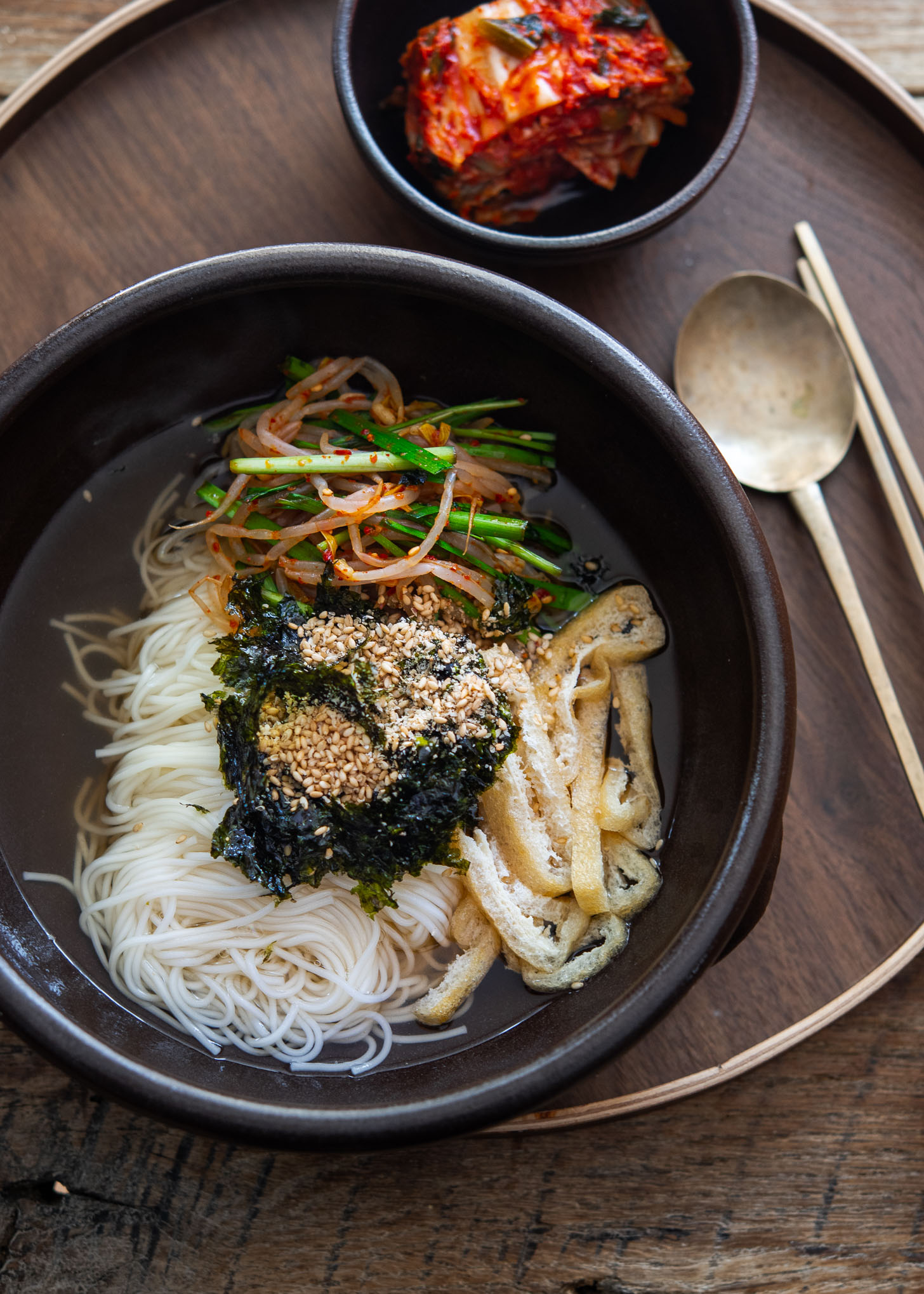
Janchi guksu (Korean noodle soup) literally means “banquet noodles.” In Korea, this simple yet meaningful dish is often served at weddings, birthdays, and family gatherings. The long, thin noodles symbolize longevity and good fortune, making it a staple at celebratory tables.
This light Korean noodle soup features soft wheat noodles in a clear anchovy-based broth and is traditionally topped with simple garnishes like egg strips, carrots, and zucchini.

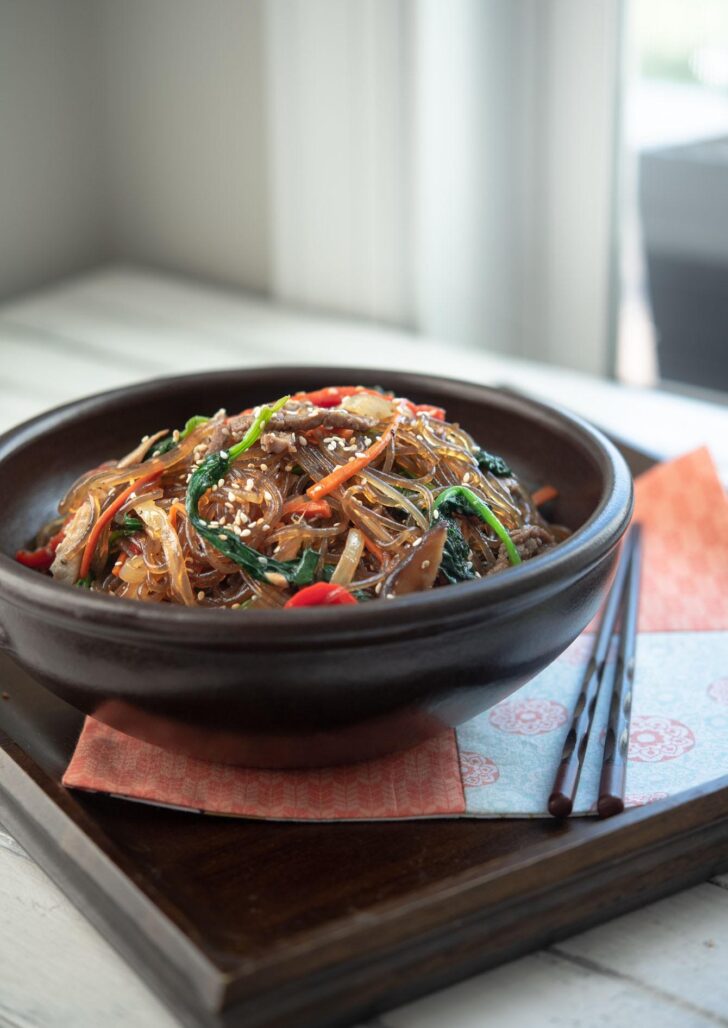
Get new recipes via email:
Thank you for subscribing!
But to be honest, I’ve always found the usual toppings a little too plain—and I knew there had to be a more exciting way to enjoy janchi guksu. I found it at a humble restaurant in Korea’s eastern province, where their take on janchi guksu became locally famous.
Their version was topped with seasoned mung bean sprouts, Asian chives, crispy fried tofu, and a generous sprinkle of crushed sesame seeds over a deep, umami-rich broth. The moment I tasted it, I knew I had found my forever janchi guksu recipe.
It’s still easy to make at home, and today I’m sharing my twist on this classic Korean noodle soup—one that honors tradition but adds bold, savory flavor in every bite.
What You’ll Need to Make Janchi Guksu


Broth for Korean Noodle Soup
Anchovy-kelp broth is the heart of janchi guksu. This light, savory stock is one of the foundational Korean soup bases. For the cleanest flavor, use dried Korean anchovies with the heads and guts removed, along with a small piece of dried kelp (dashima).
For convenience, you can also use Korean soup stock packets (which I am using for this recipe) or stock coins—available at most Asian grocery stores or online.
Don’t love anchovy broth? You can substitute with beef broth or chicken broth for a different depth of flavor. For a vegetarian janchi guksu, use a clear vegetable broth made with dried shiitake mushrooms and kelp. Each option creates a unique version of this Korean noodle soup.
What Kind of Noodles to Use
Janchi guksu is made with thin wheat noodles called somyeon (or somen). These noodles cook quickly and have a soft, silky texture perfect for light broth-based soups.
You can find Korean somyeon in most Asian grocery stores or online. Japanese somen noodles are a close substitute if somyeon is unavailable. For another refreshing dish that uses somyeon, check out my recipe for cold soy milk noodle soup (kongguksu).
Tip: Rinse the noodles in cold water after cooking to remove starch and keep them springy.
Toppings for Janchi Guksu
This recipe features a flavorful topping mix of blanched mung bean sprouts, Asian chives, and fried tofu (yubu). Blanch the mung bean sprouts in boiling water for 5 seconds, then rinse under cold water to retain crunch and remove any raw taste.
I chose fried tofu for added protein and richness, but feel free to customize. Try thin egg strips (jidan), seasoned zucchini, or even sliced beef brisket if you prefer a heartier bowl. You can also add chopped kimchi or any of your favorite Korean side dish toppings.
How to Make Janchi Guksu (Korean Warm Noodle Soup)
Making this Korean noodle soup is simple and comes together in just a few steps:


1. Make the broth
Simmer anchovy-kelp stock (or your preferred broth) and season with fish sauce and salt. Keep it warm until ready to serve.


2. Cook the noodles
Boil thin wheat noodles (somyeon) according to package instructions. Add a splash of cold water during cooking to improve texture. Rinse under cold water to remove starch and keep them springy.

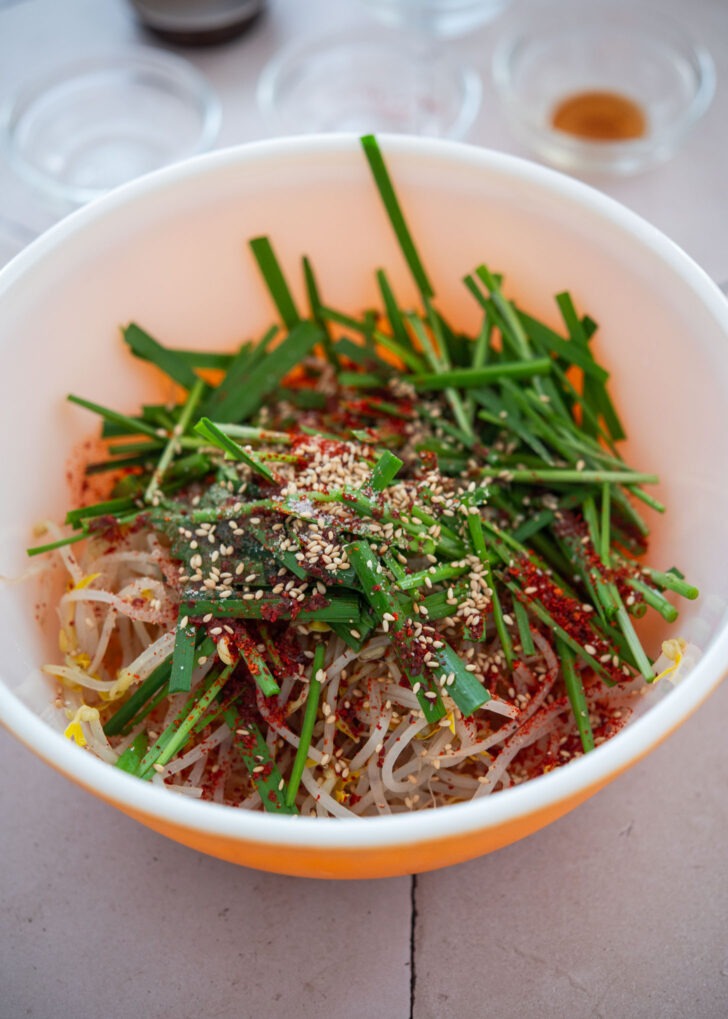
3. Prepare the toppings
Blanch mung bean sprouts briefly, then rinse in cold water. Mix with chopped Asian chives and a light seasoning. Get your fried tofu, roasted seaweed, and sesame seeds ready.

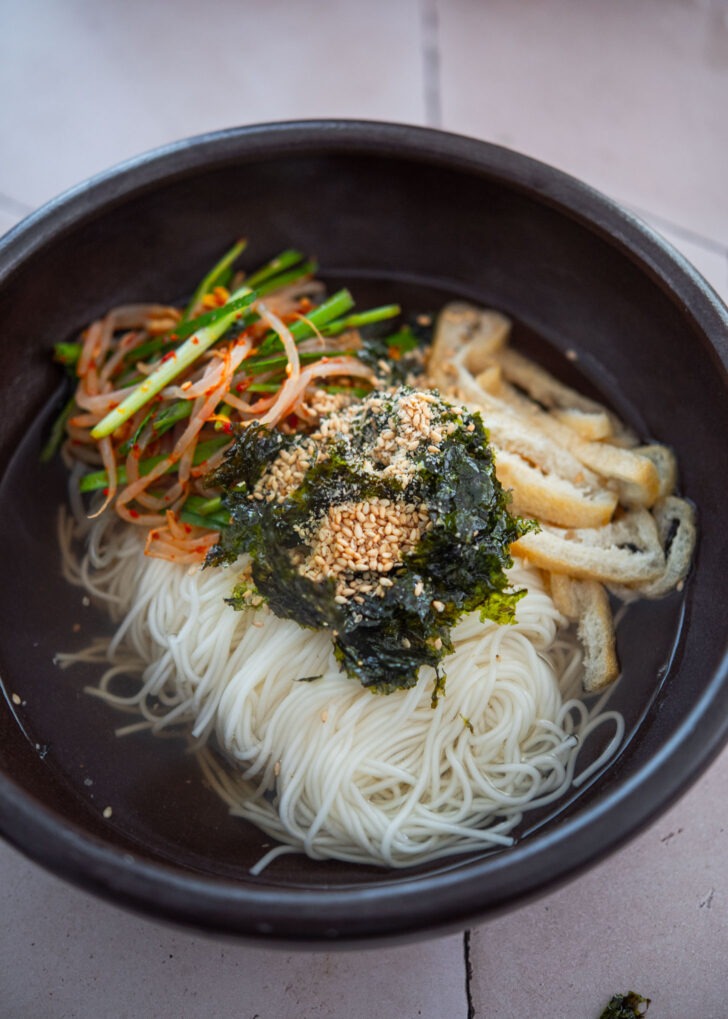
4. Assemble and serve
Divide the noodles into bowls. Top with vegetables, tofu, seaweed, and sesame seeds. Pour the hot broth around the noodles just to immerse them. Serve immediately.
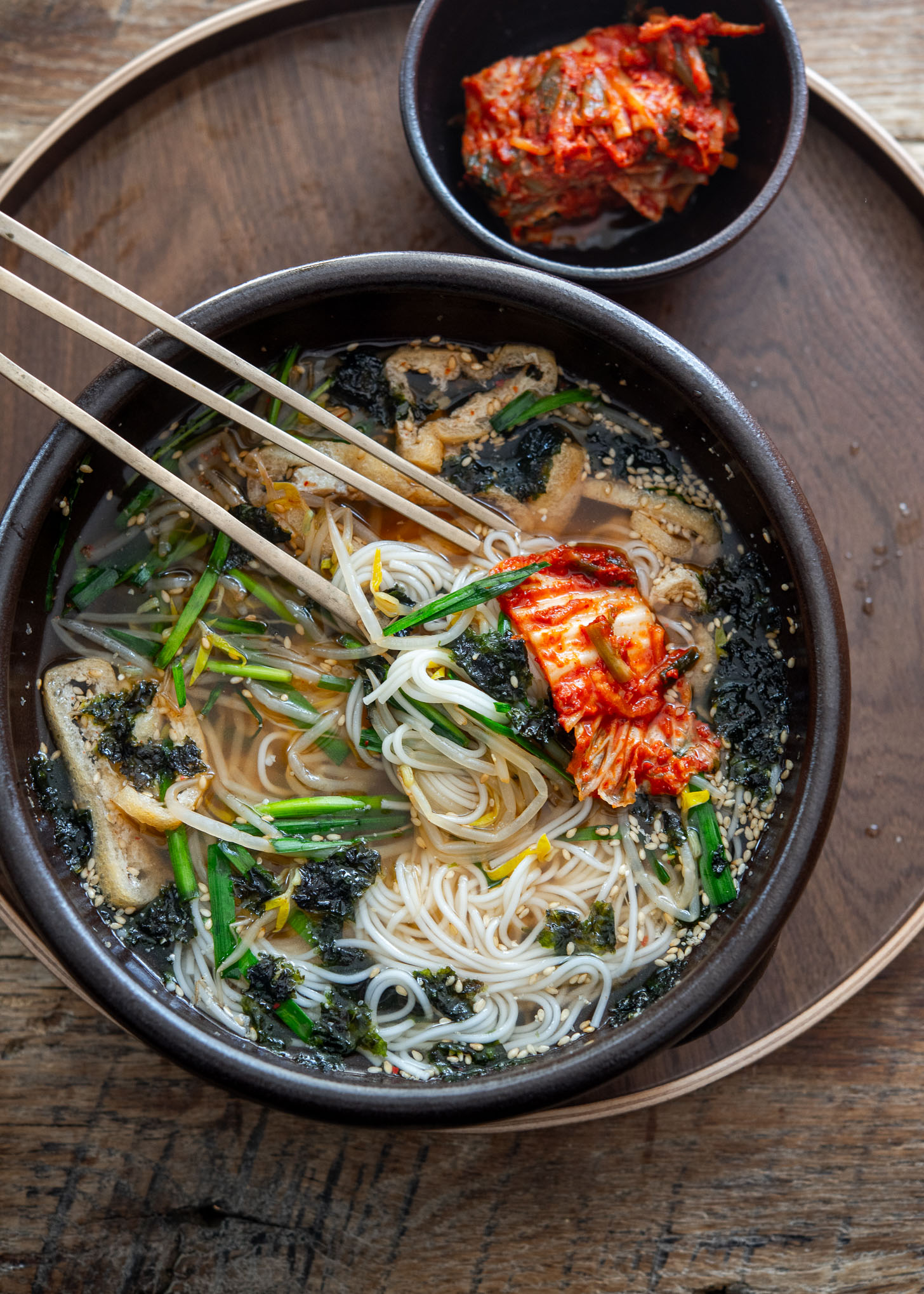
What to Serve with This Korean Noodle Soup
Janchi guksu is often served with simple banchan (Korean side dishes) on the side. Here are a few great pairings:
- Baechu Kimchi (Napa Cabbage Kimchi) – The spicy tang of aged kimchi balances the light broth.
- Korean Cucumber Salad (Oi Muchim) – Crisp, refreshing, and quick to make.
- Braised Tofu (Dubu Jorim) – Adds a savory side that complements the mild soup.
- Korean Pancakes (Jeon) – Like kimchi or zucchini jeon, perfect for dipping and sharing.
Note: This noodle soup is light enough for lunch but also great as part of a larger celebratory meal. If you love this soup, you might also enjoy other dishes in my Korean noodle recipes collection.

Love this recipe? Rate it and share your experience in the comments below! On Instagram? Tag me to showcase your creation. For more delicious recipes, subscribe to our newsletter!
Janchi Guksu (Korean Banquet Noodle Soup)
Servings: 2 people
Prep Time: 10 minutes
Cook Time: 20 minutes
Total Time: 30 minutes
A light and flavorful Korean noodle soup made with anchovy broth, thin wheat noodles, and savory toppings like mung bean sprouts and fried tofu. This janchi guksu recipe is perfect for celebrations or a simple comforting meal.
Broth (see note):
- 5 cups water
- 1 bag anchovy-kelp dashi packet, or 3 anchovy stock coins
- 1 tbsp Korean fish sauce
- pinches salt, to taste
Optional toppings
- 3-4 fried tofu (yubu), sliced
- 1 bag roasted seaweed snacks, crumbled
- 2 tbsp toasted seaweed , crushed
- fried egg strips
- chopped kimchi
Make the broth: In a pot, combine 5 cups of water with a anchovy stock packet. Bring to a boil, then reduce heat and simmer for 10 minutes. Remove the packet. Season the broth with Korean fish sauce and salt to taste. Keep warm.
Cook the noodles Boil somyeon (thin Korean wheat noodles) in a large pot of water according to the package instructions. Add a splash of cold water once or twice during cooking to help the noodles stay chewy. When done, drain and rinse under cold running water to stop the cooking and remove excess starch. Set aside.
Prepare the mung bean sprout topping: Bring a small pot of water to a boil. Blanch mung bean sprouts for 5 seconds, then immediately rinse in cold water. Drain well. In a bowl, toss with chopped Asian chives, soy sauce, Korean fish sauce, Korean chili flakes (gochugaru), sugar, and a sprinkle of sesame seeds.
Prepare additional toppings: Cut fried tofu (yubu) into strips or bite-sized pieces. You can also prep thin egg strips (jidan), kimchi, or other toppings if desired. Set aside crumbled roasted seaweed and toasted sesame seeds for garnish.
Assemble and serve: Divide the cooked noodles into serving bowls. Arrange the mung bean sprout mixture and tofu on top. Add seaweed and sesame seeds. Gently ladle the hot broth around the noodles, just enough to immerse them. Serve immediately.
- For the most authentic flavor, use dried Korean anchovies (with heads and guts removed) to make the broth. They add deep umami without overpowering the soup.
- If you’re not a fan of anchovy stock, you can substitute with beef broth or chicken broth for a richer, heartier flavor.
- For a vegetarian option, use a light vegetable broth made with dried shiitake mushrooms and kelp (dashima). Keep in mind that each broth will bring its own unique taste to the dish.
Calories: 588kcal, Carbohydrates: 113g, Protein: 31g, Fat: 4g, Saturated Fat: 0.2g, Polyunsaturated Fat: 0.4g, Monounsaturated Fat: 0.2g, Sodium: 3630mg, Potassium: 369mg, Fiber: 12g, Sugar: 21g, Vitamin A: 2135IU, Vitamin C: 32mg, Calcium: 141mg, Iron: 4mg
Tag @beyondkimchee on Instagram. I love to see your masterpiece.

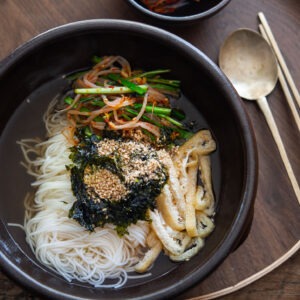






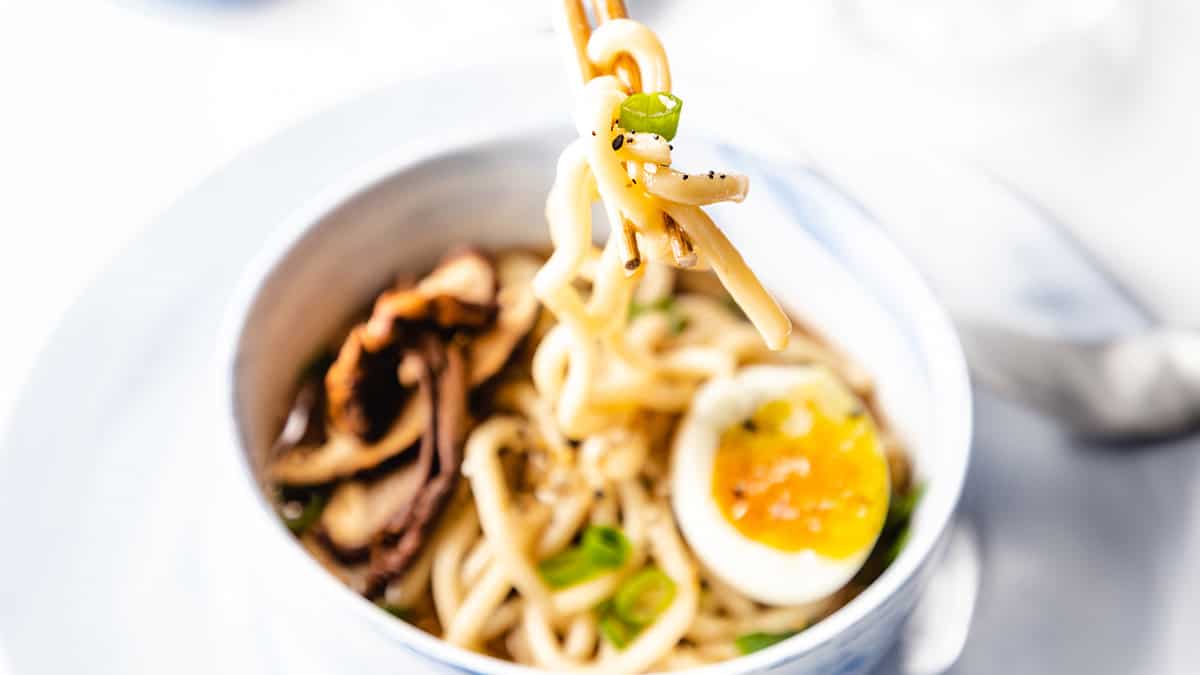

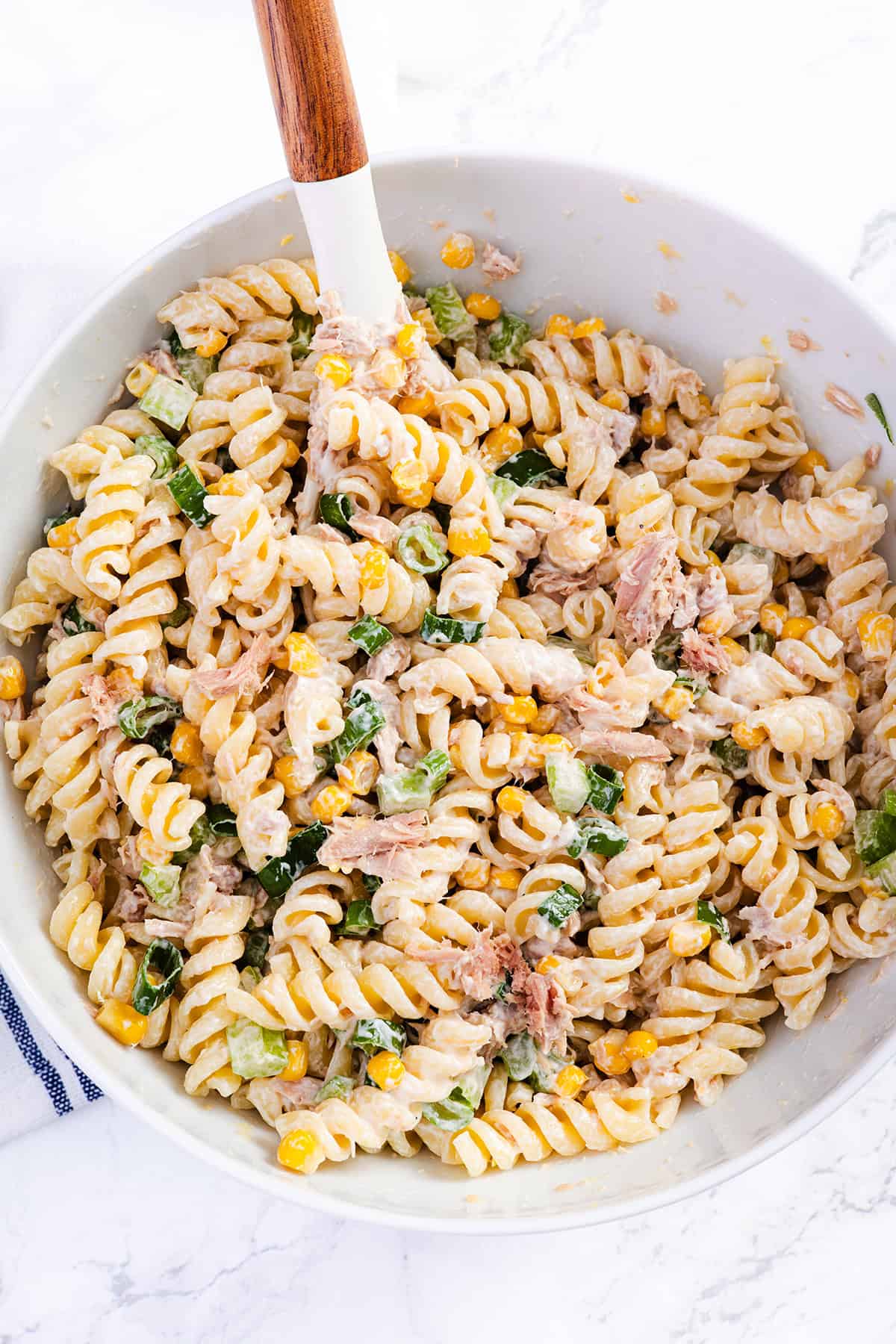

 English (US) ·
English (US) ·